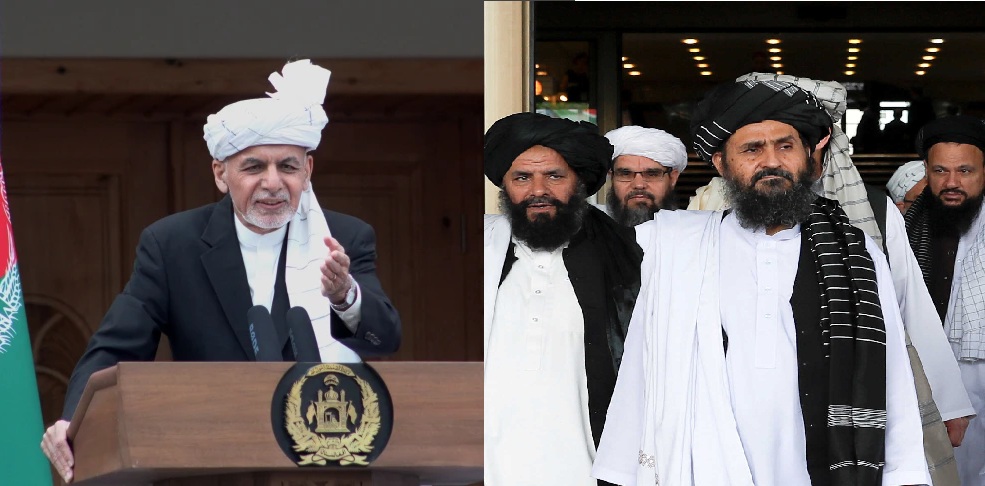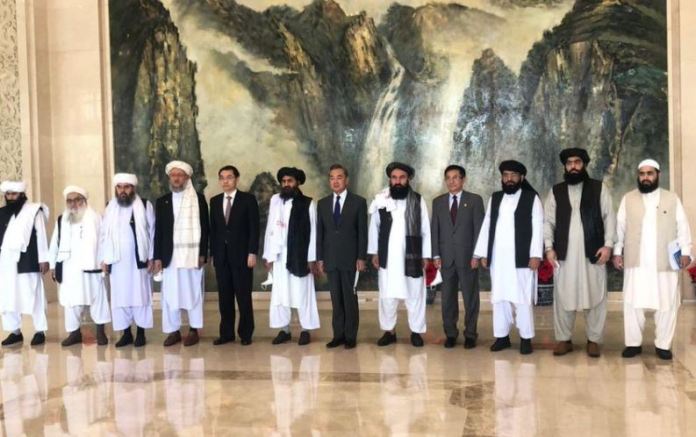
Afghanistan is a beautiful country with natural resources and intertwined history with India right from the era of Mahabharata. Shakuni hailed from Kandahar which is in today’s Afghanistan. A Gurudwara which was desecrated recently is said to have been visited by Guru Gobind Singh. Unfortunately, it’s resources and favourable geographical location has been its curse, right from Anglo-Afghan war to US/USSR incursions. Some of its misfortunes might be blamed on its own tribal conflicts but much has been due to other countries and their selfish interests.
Emergence of Taliban
In the 1980s, Afghanistan guerrillas called Mujaheddin fought the Soviet occupation for nine years. They were sponsored with weapons and resources by the CIA. This was during the peak of the Cold War where the United States of America and USSR were fighting for supremacy. In 1989, when Soviets pulled out of Afghanistan, it was expected to become stable. Contrary to expectations, by 1992 there was a full blown civil war between the tribal leaders for power, which turned out to be breeding fertile grounds for organisations like Taliban to emerge.
Taliban started getting traction in 1994, Its members mostly studied in conservative religious schools in Afghanistan and also in Pakistan and many of its members were veteran Mujaheddin. They started with the intention of controlling Afghanistan and making it a complete Islamic State in accordance with strict Sharia.
Due to the tribal conflicts, Taliban could march ahead from city to city without much resistance announcing they would make the cities safe again. This was perceived as good news by many citizens who were suffering in anarchy. By 1996, the Taliban seized the capital and declared Afghanistan as an Islamic Emirates and started imposing Islamic laws. Music, movies were all completely banned. Women’s rights were completely curtailed with no freedom to work outside except for doctors.
Implications of 9/11
Even after years of rule by the Taliban, the stability and prosperity they had promised was nowhere near the horizon, on the contrary it went farther away. On 11th September, American twin towers were attacked by suicide attackers trained by Al Qaeda. The US was after Osama bin Laden, the then head of Al Qaeda, who was hiding in Afghanistan with the help of Taliban. The US wanted to extradite him to punish him for his involvement in the 26/11 attack. But the Taliban asked the US to produce the necessary evidence against him to initiate the process. This enraged the US which then invaded Afghanistan and forced the Taliban out of power and installed an interim government within an year.
It took three years to form the Constitution and Hamid Karzai was elected as the new president. The Taliban during this time started recruiting with the intention of throwing the US out and coming back to power. Thus started years of conflict which continue till date.
Costs of Conflict
The conflict in Afghanistan has resulted in the death of more than 40,000 Afghans civilians, 64,000 Afghan military and 3500 international soldiers. US has spent nearly $1 trillion in this war and reconstruction projects. Despite all this, Afghanistan is not anywhere near to stability than it was before. Taliban still exercises control in several regions.
It took three years to form the Constitution and Hamid Karzai was elected as a new president. The Taliban during this time started recruiting with the intention of throwing the US out and coming back to power. Thus started years of conflict which continue till date.
Organisation of Taliban
Taliban is estimated to have around 85,000 full-time fighters and many more in training camps. According to the experts, roads are very significant in controlling Afghanistan. Recognizing this, the Taliban controls many major highways which results in the projection of the Taliban as a major force and a sense of omnipresence in the eyes of normal citizens.
The current Taliban leader is Haibatullah Akhundzada. Taliban has set up a system with all the necessary departments to enforce their policies almost like a parallel government in Afghanistan. They are said to have their own courts which are set to be popular among the masses for swift justice, in the area where Afghan state has failed by some margin.
According to a UN commission, the Taliban earns a revenue of close to $1.5 billion a year. This is largely from growing opium and export of drugs to other countries. Now that they have control over huge portions of Afghanistan, mining and trading of minerals has also increased their income. Illegal tax collection and foreign funding from other countries like Pakistan or Iran is also a sizable portion of it’s income.
Relationship between Taliban and Afghan Government
International community has always supported the Afghan government to start having discussions with the Taliban to arrive at some consensus. In 2018, there was a brief meeting between them in Maldives during the Eid ceasefire but to no avail.
The core of the problem according to many experts is that the government of Afghanistan sees the Taliban as a real existential threat to them and everything they represent. On the other hand, Taliban have been adamant on their demand of re-establishment of the regime that was toppled by the US Army.
With the complete and hasty retreat of the United States from Afghanistan without necessary safeguards in place, Taliban expansion has been exponential and alarming. Videos released by Taliban reveal many lethal weapons left behind by US are now in their hands, adding more fuel to the conquest. Contrary to their claims of reforms within, the Taliban can be seen continuing in their old cruel and brutal ways.
International community has always supported the Afghan government to start having discussions with the Taliban to arrive at some consensus. In 2018, there was a brief meeting between them in Maldives during the Eid ceasefire but to no avail.
The current predicament of Afghanistan leaves behind a series of questions in its trail. Was the USSR justified in trying to implement Communist rule there? Was the CIA correct in funding and developing a terrorist organisation? What was the motive of the United States in overthrowing a Talibani regime? Where does Pakistan stand regarding the Afghanistan government? What was the primary intent of ISI to train and continue training terrorist organisations in Afghanistan? There are many such questions that need answers.
Whatever the answer to these questions, it is undeniable that Afghanistan‘s current situation is the result of a clash of conflicts of interest between many countries. The future of Afghanistan people, denial of basic rights, hampering their growth opportunities are undeniable facts. This has resulted in afghan being a breeding ground of gross human rights violations. Taliban has started persecution of other religious communities, now more emboldened by what they perceive as US defeat.
Regional Equations

China in the midst of all this has started to have active discussions with the Taliban members. Thinking of its economic returns, China has conveyed its wish to expand the CPEC project to include Afghanistan. Afghanistan also gives China the link to Europe through central Asia. It has also expressed its interest in starting infrastructure projects and providing a line of credit.
India has always been supporting the development of Afghanistan. India for its part has invested around $3 billion in many construction projects. It has built many libraries, Parliament and other buildings which are vital for the growth of the country. Taliban seems to be instigated by many Self interest groups to blockade the projects. India has raised security concerns for its citizens who are in Afghanistan. India’s approach in this predicament has been cautious. Till recently India had refused to engage with Taliban, but recently it has shown its intent to start a dialogue.
Afghan experts are split on this issue of how to deal with the Taliban. Some suggest that India must start to take an active role in the Afghanistan situation by engaging with all the parties concerned. The others suggest India must wholeheartedly support the Afghanistan government in any which way possible, even with military supplies. But there are possibly grave ramifications in this precarious situation. India must tread carefully with long term strategic thinking and planning.
Shreyas has an M.Sc. in Psychology and serves in NIMHANS. He writes regularly on politics, society, international affairs and technology. Views expressed are the author’s own and do not necessarily reflect the views of SamvadaWorld or its staff.
